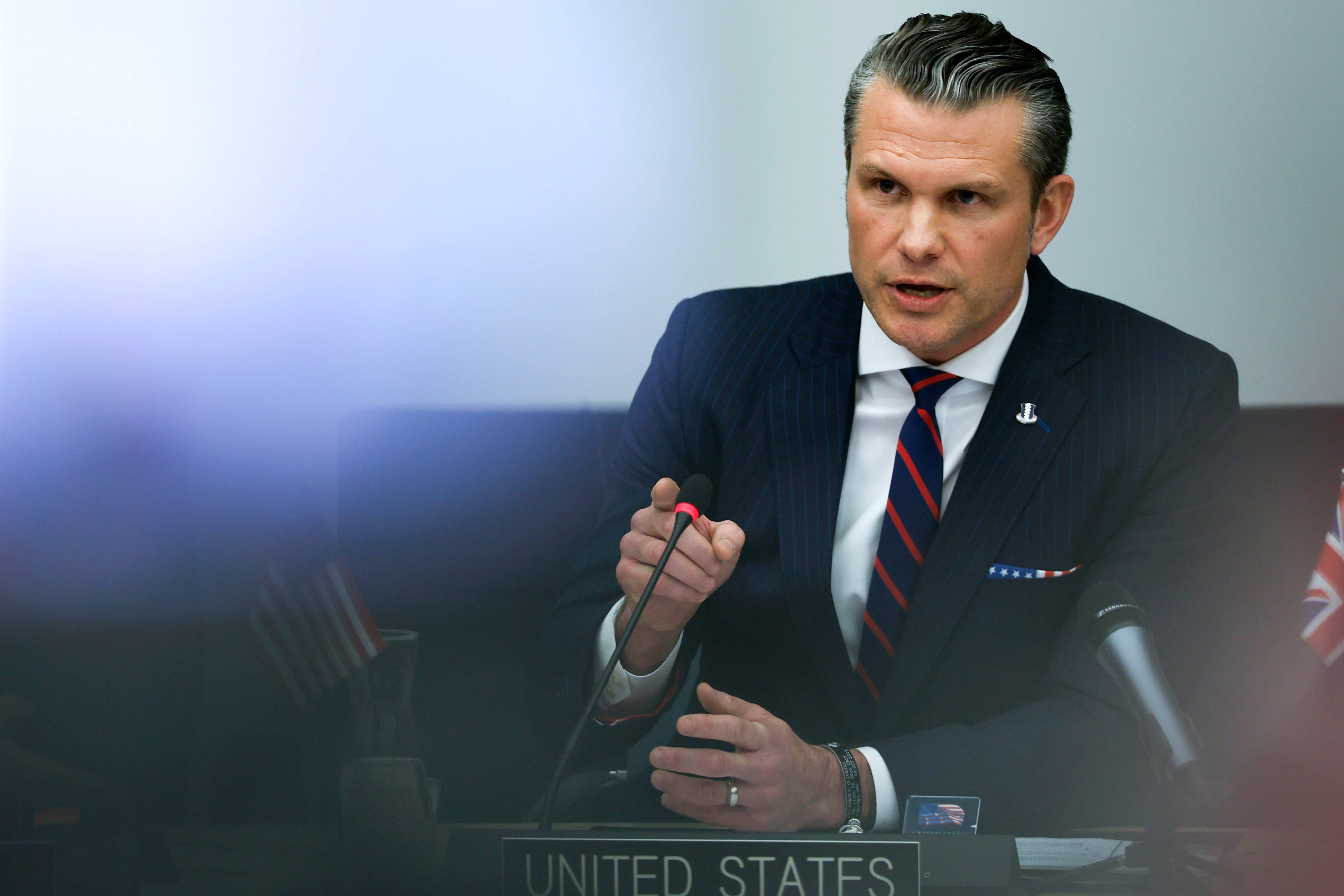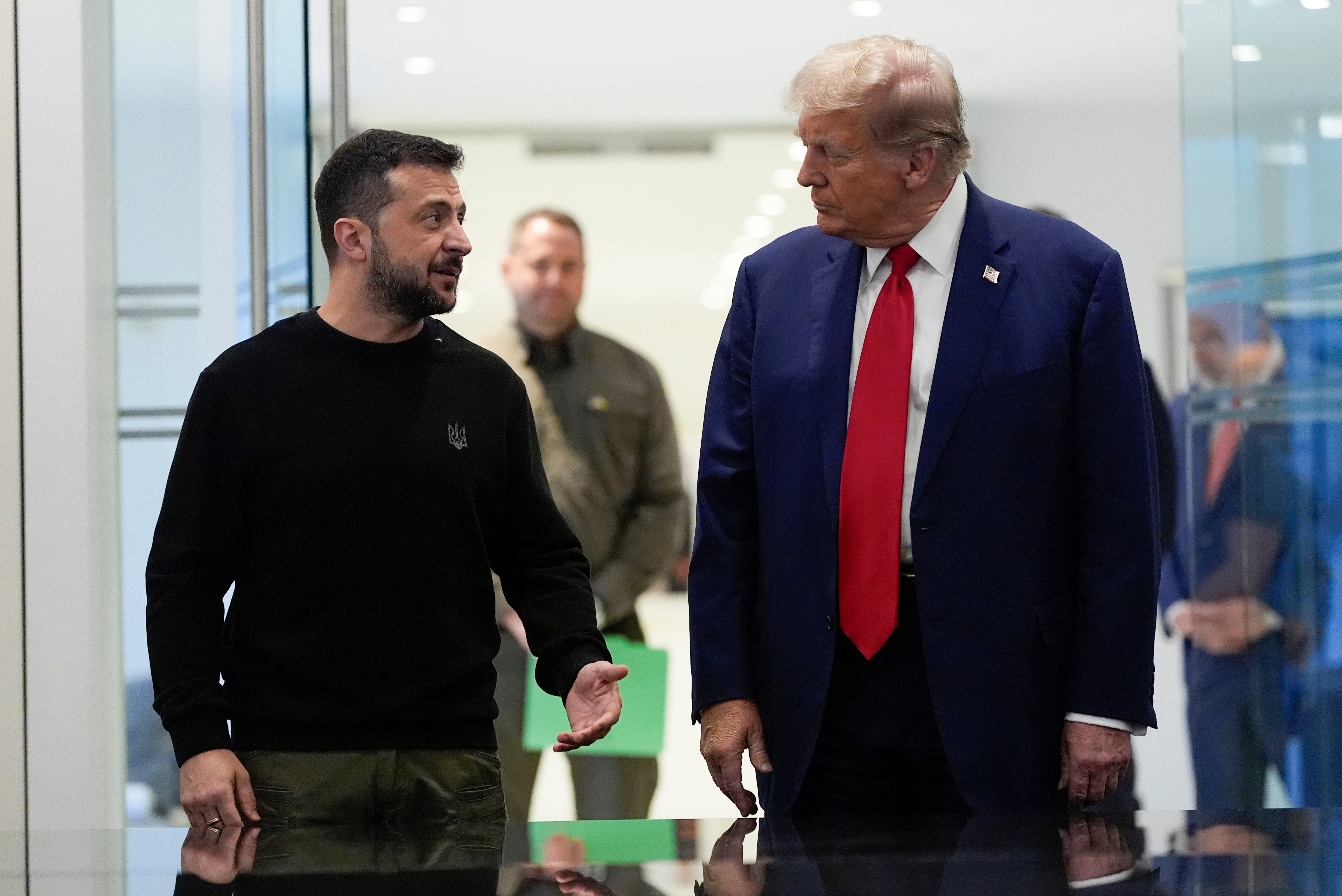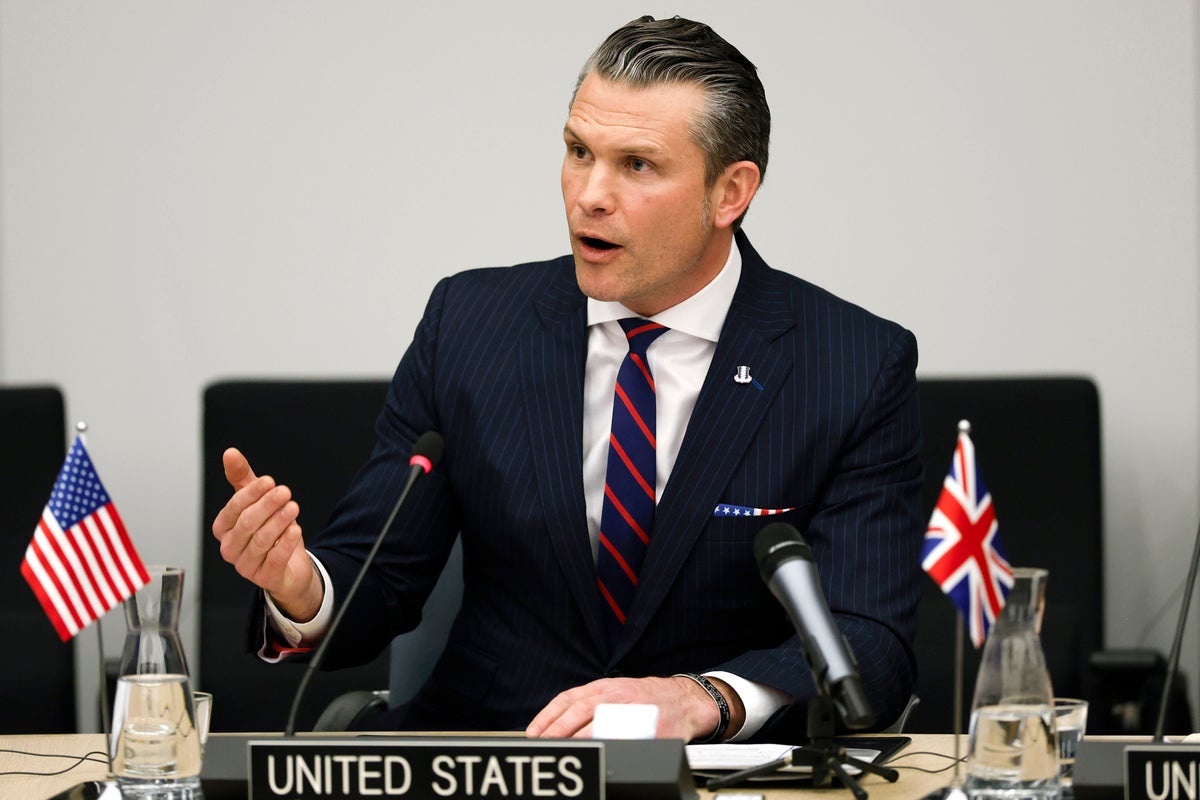The Trump administration has just sliced away key negotiating options for Ukraine, giving the invading Russians catastrophic advantage even before any so-called peace talks could begin.
In any future negotiations now, Ukraine’s president Volodymyr Zelensky’s position will be weaker.
On Wednesday, Ukraine’s military capacity was immediately undermined in the medium term by Pete Hegseth telling his fellow Nato defence ministers that “Europe must provide the overwhelming share of future lethal and non-lethal aid to Ukraine”.
The US has provided about $120 billion to Ukraine, about half of that military aid and the rest of Nato has matched that military spend too. But in ruling out any future funding increase from the US for Ukraine, Hegseth is sending a signal to the Kremlin that the US is backing away.
Zelensky has argued that any future settlement with Russia, which currently controls about 22 per cent of his country, would depend on 150,000-200,000 foreign troops as a guarantee against another invasion.
He recently insisted that this could only be achieved with American involvement.
Hegseth ruled that out.

There would be no American boots on Ukrainian ground as part of a peacekeeping force. “To be clear, as part of any security guarantee, there will not be US troops deployed to Ukraine,” he said.
There was no need to spell this out ahead of talks with Russia. Part of Zelensky’s negotiating tactic would have been the mere suggestion that US troops could be on Ukrainian soil. That would have given the Russians pause for thought.
But if foreign troops from Europe, Canada, and other Ukrainian supporting nations were deployed they would have brought the full weight of the Nato alliance with them.
Not any more.
“If these troops are deployed as peacekeepers to Ukraine at any point, they should be deployed as part of a non-Nato mission and they should not be covered under Article 5,” Hegseth said.
Article 5 is the all for one and one for all clause in the Nato foundation document that says that any attack on a Nato member is an attack on all of them. It has only been invoked once – when the US was attacked by al Qaeda on 9/11.
Now Russian President Vladimir Putin need no longer fear that Nato’s full might would be brought to bear against him if he bombed British troops in Ukraine.
That fear was a key part of Zelensky’s future platform. It was also a profoundly important part of the power of Nato as an alliance. And now that power has evaporated.
Mark Rutte, the Kremlin will have already noted, ducked the question entirely when he was asked by Sky News, ahead of the Hegseth statements, whether the US could be counted upon to come to the aid of a Nato ally if it was attacked.
The Nato secretary general waffled about the need for more defence spending across Nato but didn’t once acknowledge what would have once been automatic – that the US would aways come to the aid of a Nato member under attack.

That’s a further boost to the Russian position in future negotiations.
Part of Zelensky’s platform for peace has been that Ukraine should, eventually, get Nato membership. That way, in his view, Russia would think twice about invading again.
That’s gone too now.
And so has Ukraine’s demand that Russia, which invaded in 2014 and seized some of the eastern Donbas region as well as the Crimean Peninsular, withdraw back to its own borders.
That demand, which has the backing of the international community and is demanded by international law represents a position that is “illusory” the US defence secretary said.
“We hear your concerns on stepping up for Ukraine, and we hear your concerns on stepping up for European security,” UK Defense Secretary John Healey said in response.
But so far none of the Nato defence ministers appear to have grasped the major strategic shift that the Trump administration is now embarked upon.
This week Trump said that maybe Ukraine “would be Russian some day”. That begs the question, who’s side is he really on?


